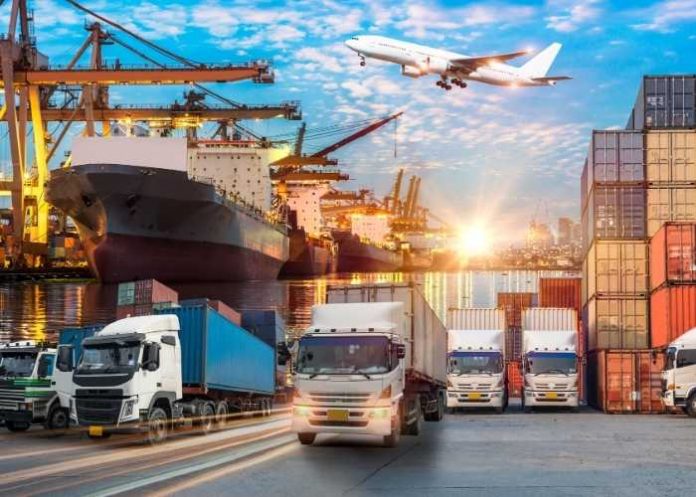
In the following article we will explain what is logistics and why it is so important not only for companies but also for the economy.
The word logistics has its origins in 1846 and is derived from the Greek “logistics”, which means the art of knowing how to calculate. This term was used, in principle, in the military sphere, by Antoine Henri Jomini, in his work “Compendium of the art of war” when referring to the strategy used to acquire, store and move supplies/personnel.
Currently, it is a term widely used in the business world, especially in companies that are in the manufacturing sector.
What is logistics.
From a business point of view, logistics is the management of the flow of resources in an organization. It is the process of coordination and transfer of resources, from one location to another, complying with adequate times and conditions to ensure the care of said resources.
Logistics is also defined as the strategy used to acquire, store and distribute each and every one of the goods that a company needs to function. Among them are: raw material, equipment, supplies and personnel.
In turn, logistics management involves identifying potential distributors and suppliers, to determine their effectiveness and accessibility. One of the great objectives of logistics management is to have the correct amount of a resource or input at the right time. Additionally, the company must have the capacity to take it to the location where it is needed and transport it in the perfect conditions so as not to affect the process.
Components of the logistics process.
To understand more easily what is logistics it is necessary to understand each of its components. Find them below:
1. Storage and handling of materials.
To meet the demand, it is necessary to have sufficient resources in case of an increase in it. As the demand is unpredictable and usually there is an imbalance, it is necessary to store a surplus. In this case, it is necessary to have warehouses or locations where the company can store these resources, which can be raw materials or even finished products.
Additionally, these warehouses must have the necessary infrastructure and equipment for handling materials (shelves, cold rooms, pallets, hydraulic jacks, vehicles, etc.).
2. Packaging and unification.
Logistics management is responsible for the care of the product and one of the most efficient ways to do it is through good packaging. This is what the packaging takes care of.
Additionally, unification is responsible for grouping products into units depending on their types. In this way they are easy to locate inside the warehouse and out of danger of mixing with other products.
Geometrically a cube is the easiest way to move and store. For this reason, all products are packed and transported in boxes.
3. Inventory.
Inventory is a system created to control the number of product units and their location.
Inventory controls the flows of goods in and out of a warehouse. How is this accomplished? By looking at past order sales data and using various mathematical and statistical tools to try to predict how many goods consumers will demand.
Inventory management is not an exact science, but depending on how variable demand can be, it is a useful tool to help manage the flows of goods through the supply chain.
4. Transportation.
As its name indicates, transportation is the component responsible for the transfer of goods from point A to point B.
This includes all modes of transportation, including road vehicles, freight trains, shipping, and air transportation. Without transportation, goods could not move from one stage to another within a supply chain. Some goods with short supply chains, like food, don’t travel far. Other more complex products consist of many components that can be shipped from all over the world.
5. Information and control.
Each of these components needs an information flow that is within the reach of all logistics management. Each company needs a clear and efficient information system that allows control of all areas. For example, knowing inventory and order levels help decide which orders should be picked and packed in warehouses, and allow transportation planning and organization.
The role of information and control is to help design information systems that can control operating procedures. They are also key in forecasting demand and inventory, as already mentioned.
Before we continue, we would like to ask you a favor. Simply vote from 1 to 5 to see how you’ve found this article so far. Thank you very much!
What is the difference between logistics and supply chain.
It is very common to confuse these two terms, since their definitions are very similar. However, each refers to different processes.
Supply chain are all the activities required by a company to deliver goods and services to the consumer. It is a network between a company and its suppliers to produce and distribute a specific product to the final buyer. This network includes different activities, people, entities, information and resources. Given this definition; What is the difference?
According to the portal iimu.ac.inThe main difference is that logistics is the process of integration and maintenance (flow and storage) of goods in an organization, while the supply chain is the coordination and administration (movement) of resources from different organizations.
Another difference is that logistics focuses on customer satisfaction, while supply chain seeks to achieve competitive advantage.
Supply chain is a more modern and complex term, as it includes the integration of different organizations. Logistics management focuses on a single company, the purchase and delivery of raw materials, packaging, shipping and transportation of goods.
Despite their differences, it is very common to talk about both terms simultaneously, since the logistics process is part of the supply chain.
Logistics in the economy.
Logistics management does not only involve companies. At the national level, each country functions as a company, which must also move resources. Finally, globally each country imports and exports products. Thus, each economy has its own infrastructure to ensure the effective flow of resources.
Logistics is a $4.3 trillion industry. It is so important that the World Bank annually publishes the Logistics Performance Index to determine the challenges and opportunities that countries face in trade, infrastructure, technology, visibility and speed.
These components are the pillars of economic growth. Highly efficient logistics improve international trade, reduce product costs, and increase corporate profits.
Other articles that might interest you:
Functional areas of a company. What does each one do and why?
What is organizational culture and why is it important for a company.
12 types of customers and how to deal with them to sell more.
And remember, if you are really interested in creating your own business, you can read our book “How to create a company while working: Discover how to manage your time, manage your money and motivate yourself while creating a company and working for another” , where you will find all the information you need to found your own company, without having to leave your job.


